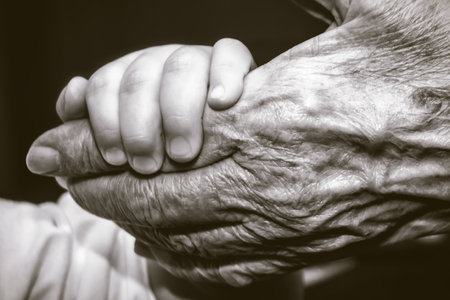Introduction to Shoulder Recovery
The shoulder is a remarkably versatile joint, allowing for a wide range of movement that is essential for daily activities and many forms of exercise. In the UK, shoulder injuries are common and can arise from various causes such as sports participation, repetitive workplace tasks, age-related degeneration, and accidental falls. Whether it is a rotator cuff tear from rugby, impingement from office-based work, or arthritis-related stiffness in older adults, these injuries can significantly affect one’s quality of life. Prompt and effective recovery strategies are therefore vital to restore optimal function, minimise pain, and prevent long-term disability. As awareness grows about the benefits of a holistic approach to rehabilitation, British physiotherapists and healthcare professionals are increasingly utilising hydrotherapy and other adjunct modalities to support shoulder recovery. These innovative therapies not only address physical healing but also empower patients to take an active role in their own rehabilitation journey.
Understanding Hydrotherapy
Hydrotherapy, often referred to as aquatic therapy, is a time-honoured approach within British physiotherapy for aiding musculoskeletal recovery, including shoulder rehabilitation. Rooted in the therapeutic use of water, hydrotherapy leverages the physical properties of water—buoyancy, hydrostatic pressure, viscosity, and temperature—to create a supportive environment that reduces joint stress and promotes functional movement. This gentle yet effective modality has been a staple in UK rehabilitation settings since the early 20th century, evolving from traditional spa therapies to evidence-based clinical practice.
Principles of Hydrotherapy
| Principle | Description | Benefit for Shoulder Recovery |
|---|---|---|
| Buoyancy | Reduces the effect of gravity, supporting body weight in water. | Lowers strain on the shoulder joint, making it easier to perform exercises with less pain. |
| Hydrostatic Pressure | Water exerts even pressure on the body when submerged. | Helps reduce swelling and supports improved circulation around the shoulder. |
| Viscosity & Resistance | Water provides resistance during movement. | Allows for graded strengthening exercises without overloading the healing tissues. |
| Thermal Effects | Warm water soothes muscles and increases blood flow. | Promotes relaxation and decreases muscle stiffness around the shoulder. |
A Brief History in British Physiotherapy Practice
The use of hydrotherapy in Britain dates back to Roman times, with public baths being central to health and wellbeing. In modern physiotherapy, institutions such as The Royal National Orthopaedic Hospital have championed water-based treatments since the early 1900s. Today, hydrotherapy pools are standard features in many NHS hospitals and private clinics across the UK, reflecting its enduring value in rehabilitation programmes.
Supporting Shoulder Recovery through Water-Based Rehabilitation
Hydrotherapy offers significant advantages for individuals recovering from shoulder injuries or surgery. By harnessing buoyancy and resistance, patients can begin gentle range-of-motion activities earlier than on land, which helps prevent stiffness and maintains muscle tone. The soothing properties of warm water further alleviate pain and anxiety, facilitating confidence in movement. When combined with land-based interventions as part of a comprehensive care plan, hydrotherapy empowers patients to progress safely through each stage of shoulder recovery.
![]()
3. Benefits of Hydrotherapy for Shoulder Rehabilitation
Hydrotherapy offers a unique and effective approach to shoulder rehabilitation, providing several distinct advantages that can make the recovery journey more comfortable and successful. One of the most notable benefits is pain relief. The buoyancy of water reduces the load on the shoulder joint, which helps to decrease discomfort during movement. This supportive environment means that patients can begin gentle exercises earlier in their recovery, without the fear of aggravating their injury.
Another key advantage is the enhancement of range of motion. Water provides natural resistance while simultaneously supporting the limb, allowing patients to perform movements they might find too challenging or painful on dry land. This gentle resistance encourages gradual strengthening and flexibility, which are essential for restoring full function to the shoulder.
Confidence in mobility is also significantly improved through hydrotherapy. The warm water not only soothes stiff muscles but also creates a safe space where individuals feel less anxious about falling or re-injuring themselves. This sense of security empowers patients to push their boundaries, try new movements, and take an active role in their own recovery.
In summary, hydrotherapy addresses both physical and psychological aspects of rehabilitation by promoting pain management, increasing range of motion, and boosting self-assurance in mobility. These benefits make it a valuable adjunct to traditional physiotherapy methods for those recovering from shoulder injuries across the UK.
4. Other Adjunct Modalities in Shoulder Recovery
In addition to hydrotherapy, a range of adjunct modalities are commonly employed across UK physiotherapy settings to further support shoulder recovery. These evidence-based techniques can be tailored to the individual’s needs and rehabilitation goals, often complementing aquatic therapy for a more holistic approach.
Therapeutic Ultrasound
Therapeutic ultrasound is frequently utilised to promote tissue healing and reduce inflammation in shoulder injuries. By delivering sound waves deep into soft tissues, it aims to enhance circulation, decrease pain, and accelerate the healing process. Physiotherapists in the UK may integrate ultrasound as part of a wider treatment plan, particularly in cases of rotator cuff tendinopathy or post-surgical rehabilitation.
Manual Therapy Techniques
Manual therapy, including joint mobilisation and soft tissue manipulation, remains a cornerstone in British musculoskeletal practice. These hands-on techniques help restore mobility, alleviate stiffness, and improve overall function of the shoulder complex. Depending on clinical assessment findings, therapists may use gentle mobilisation for frozen shoulder or targeted soft tissue release for muscle tension.
Use of Heat and Cold Packs
The application of heat and cold packs is a well-established adjunct modality in the UK for managing pain and inflammation during different phases of recovery. Heat therapy is typically used to relax tight muscles and increase blood flow prior to exercises or manual therapy, while cold packs are effective in reducing acute swelling and discomfort after activity or injury exacerbation.
Comparison Table: Common Adjunct Modalities in UK Shoulder Rehabilitation
| Modality | Main Benefits | Typical Indications | Frequency/Duration |
|---|---|---|---|
| Therapeutic Ultrasound | Tissue healing, inflammation reduction | Tendinopathy, post-operative care | 2-3 times/week, 5-10 minutes/session |
| Manual Therapy | Pain relief, improved mobility | Frozen shoulder, muscle tightness | 1-2 times/week, as clinically indicated |
| Heat Packs | Muscle relaxation, increased flexibility | Chronic stiffness, pre-exercise warm-up | 10-20 minutes before activity |
| Cold Packs | Pain management, swelling control | Acute injury, post-exercise soreness | 10-15 minutes after activity or flare-ups |
Combining these adjunct modalities with hydrotherapy enables a more comprehensive approach to shoulder rehabilitation. By working closely with your physiotherapist and following an individualised plan, you can maximise your chances of restoring strength and function effectively.
5. Integrating Multiple Modalities for Holistic Recovery
In the UK, shoulder rehabilitation is increasingly adopting a holistic approach, recognising that each patient’s journey to recovery is unique. British healthcare professionals are adept at combining hydrotherapy with other adjunct modalities to create bespoke rehabilitation programmes. Hydrotherapy serves as an excellent foundation, reducing pain and inflammation, while enabling gentle movement in a supportive environment. However, to maximise recovery outcomes, it is often integrated with other evidence-based interventions.
For example, physiotherapists may complement hydrotherapy sessions with land-based exercises tailored to improve strength and flexibility. Manual therapy techniques can be included to address joint stiffness or soft tissue restrictions. Additionally, therapeutic modalities such as ultrasound or electrical stimulation may be selectively used to manage pain or facilitate tissue healing. Education and self-management strategies are also vital components, empowering patients to take an active role in their recovery at home.
This multidisciplinary approach ensures that treatment plans remain patient-centred and responsive to individual progress. Regular communication among healthcare professionals—such as GPs, physiotherapists, and occupational therapists—ensures seamless coordination of care. By tailoring the combination and intensity of modalities according to the patient’s stage of recovery, preferences, and specific goals, British clinicians help optimise functional outcomes and promote long-term shoulder health.
6. Patient-Centred Considerations in the UK
Adopting a patient-centred approach is essential when utilising hydrotherapy and other adjunct modalities for shoulder recovery within the UK. Each individual’s preferences, lifestyle, and personal goals must be factored into any rehabilitation plan to maximise outcomes and ensure long-term engagement.
Respecting Patient Preferences
British patients value open communication and shared decision-making with their healthcare providers. It is crucial to involve patients in discussions about treatment choices, whether hydrotherapy or alternative adjunct therapies such as manual therapy, exercise-based rehabilitation, or electrotherapy. Listening to their concerns—such as comfort with water-based therapy or logistical challenges—helps build trust and tailor care accordingly.
Accessing Services via the NHS and Private Clinics
Access to hydrotherapy and adjunct modalities can vary across the UK. While the NHS offers comprehensive rehabilitation services, availability of hydrotherapy pools may differ by region due to funding or facility constraints. Some patients may opt for private clinics to benefit from shorter waiting times or more specialised programmes. It’s important for clinicians to provide clear guidance about all available options, including potential costs and referral pathways, so that patients can make informed decisions.
Overcoming Barriers
Geographical location, transportation issues, and financial considerations can impact access to adjunct therapies. Supporting patients in navigating these barriers—by signposting local resources or collaborating with multidisciplinary teams—demonstrates a commitment to holistic care that resonates with the values of the British healthcare system.
Setting Realistic Recovery Goals
Establishing achievable milestones is vital in maintaining motivation during shoulder recovery. In line with NICE (National Institute for Health and Care Excellence) guidelines, clinicians should work collaboratively with patients to set personalised goals based on their functional needs—whether returning to work, sports, or daily activities. Regular reviews allow adjustments to be made if progress stalls or new challenges arise.
The Value of Ongoing Support
Recovery is rarely linear; setbacks can occur. Providing encouragement, education on self-management strategies, and reassurance throughout the process is fundamental to upholding a patient-centred ethos in British healthcare. Ultimately, recognising each patient’s unique circumstances fosters empowerment and enhances satisfaction with their care journey.
7. Conclusion and Recommendations
In summary, incorporating hydrotherapy alongside other adjunct modalities offers a comprehensive, patient-centred approach to shoulder recovery. Evidence suggests that hydrotherapy can significantly reduce pain, promote range of motion, and support earlier functional gains due to the unique properties of water—buoyancy, warmth, and resistance. When paired thoughtfully with interventions such as manual therapy, therapeutic exercise, electrotherapy, or kinesiology taping, patients are better positioned to achieve optimal outcomes.
Best Practices for Effective Shoulder Rehabilitation
For clinicians:
- Assess each patient’s individual needs, including injury severity, comorbidities, and personal goals before recommending hydrotherapy or adjunct treatments.
- Integrate hydrotherapy sessions early where appropriate to manage pain and facilitate gentle movement.
- Combine hydrotherapy with land-based exercises and other modalities (e.g., ultrasound or neuromuscular stimulation) for a holistic rehabilitation plan.
- Monitor progress closely and adjust treatment plans based on patient response and emerging evidence.
Practical Tips for Patients
- Communicate openly with your healthcare team about your comfort level and any changes in symptoms during hydrotherapy sessions.
- Attend all recommended sessions consistently to maximise benefit.
- Practice prescribed home exercises regularly to supplement supervised therapy.
- If unsure about any aspect of your rehabilitation programme—whether in the pool or on land—ask questions to ensure you fully understand the purpose and technique behind each activity.
Final Thoughts
A collaborative approach between patients and clinicians is key to achieving the best possible results after a shoulder injury. By embracing both hydrotherapy and adjunct modalities tailored to individual circumstances, recovery can be safer, more effective, and more empowering for patients across the UK. Remember: early intervention, consistent participation, and ongoing communication remain at the heart of successful rehabilitation journeys.


